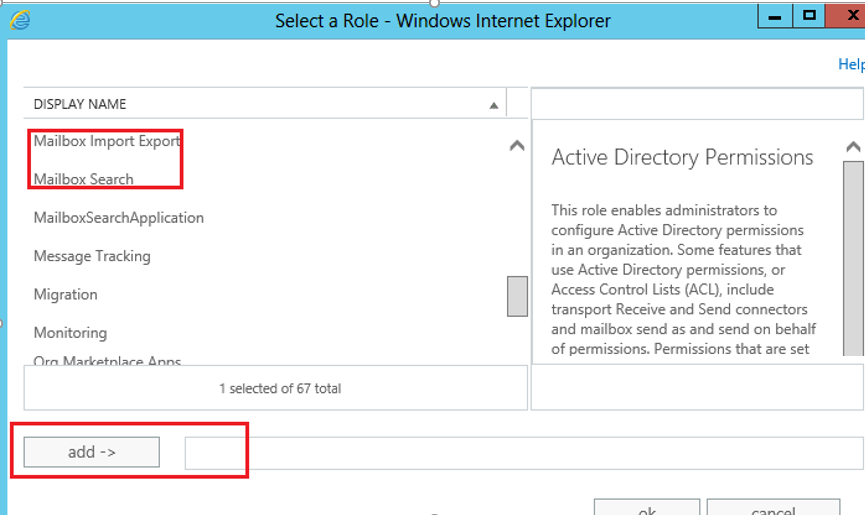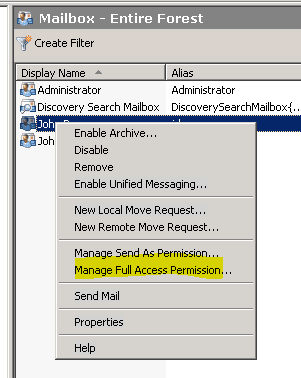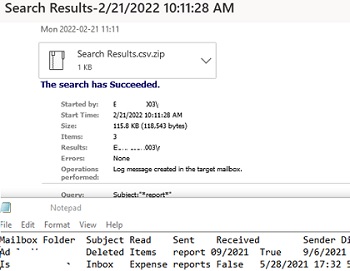

To create an email search task based on the specified criteria, run: Let’s try to search mailboxes for emails with a specific subject, sender, and date. Microsoft recommends using these cmdlets to search emails in Exchange instead of the deprecated Search-Mailbox command.Ĭonnect to M365 Security & Compliance Center: In Exchange 2016/2019 and Exchange Online (Microsoft 365), you can use the new way to quickly search and delete email messages in user mailboxes by using the New-ComplianceSearch and New-ComplianceSearchAction cmdlets.
#Search mailbox exchange 2010 how to
In this case, the following syntax is used: -SearchQuery New-ComplianceSearch: How to Search and Delete Emails in Exchange? You can also specify the size in megabytes. The size of the email items is specified in bytes, and the size of the entire email item is counted, not just attachments. Search-Mailbox -Identity k.peterson -SearchQuery 'hasattachment:true AND Size >20971520' –DeleteContent Using the OR and AND logical operators, you can combine more complex email search conditions.įind and delete all emails with attachments larger than 20 MB: Search-Mailbox -Identity k.peterson -SearchQuery 'Subject:"Secret" and from””' -DeleteContent To find and remove all emails containing the keyword “Secret” in the subject from all users not from your domain: The SearchQuery parameter processes query in the KQL format (Keyword Query Language).


Let’s look at examples of search queries to find email items using the SearchQuery parameter. Keyword Search Examples for Exchange Mailboxes In modern versions of Exchange Server and Microsoft 365, it’s best to use the New-ComplianceSearch cmdlet (discussed below) to search for emails. In the case of a large company, the search can take several days. Get-Mailbox -Database berl-ex1 | Search-Mailbox –SearchQuery –ForceĪnother Search-Mailbox cmdlet problem is its poor performance. In order to delete more items, you will have to run the Search-Mailbox cmdlet several times or split the mailboxes into groups by mailbox databases or Exchange servers. Sending data to a remote command failed with the following error message: The total data received from the remote client exceeded allowed maximum. A report is an archived CSV file that lists mailboxes meeting the search criteria. If this argument is used, a report containing the search results will be sent to the specified target mailbox.
#Search mailbox exchange 2010 full
The –LogOnly -LogLevel Full option means that search results must only be estimated without copying items to a target mailbox or deleting the messages. Get-content users.txt | Get-Mailbox -ResultSize unlimited | Search-Mailbox -SearchQuery 'Subject:"Annual Report"' -TargetMailbox sec_dept -TargetFolder "ExchSearchResult” Suppose you need to search for email messages in the list of mailboxes (given in users.txt) and copy the found items to the folder in the specific mailbox: This will allow you to manually view the found emails in your Outlook after the search is completed. To copy the search results to a certain mailbox and folder, use the TargetMailbox or TargetFolder parameters. Microsoft recommends using the more powerful New-ComplianceSearch and New-ComplianceSearchAction mailbox search cmdlets (discussed below). To return more than 10000 results, use the New-MailboxSearch cmdlet or the In-Place eDiscovery & Hold console in the Exchange Administration Center. WARNING: The Search-Mailbox cmdlet returns up to 10000 results per mailbox if a search query is specified. When using the Search-Mailbox cmdlet in Exchange Online (Microsoft 365), a warning appears: WARNING: On July 1, 2020, the Search-Mailbox cmdlet is being retired and Microsoft Support will no longer provide assistance.


 0 kommentar(er)
0 kommentar(er)
